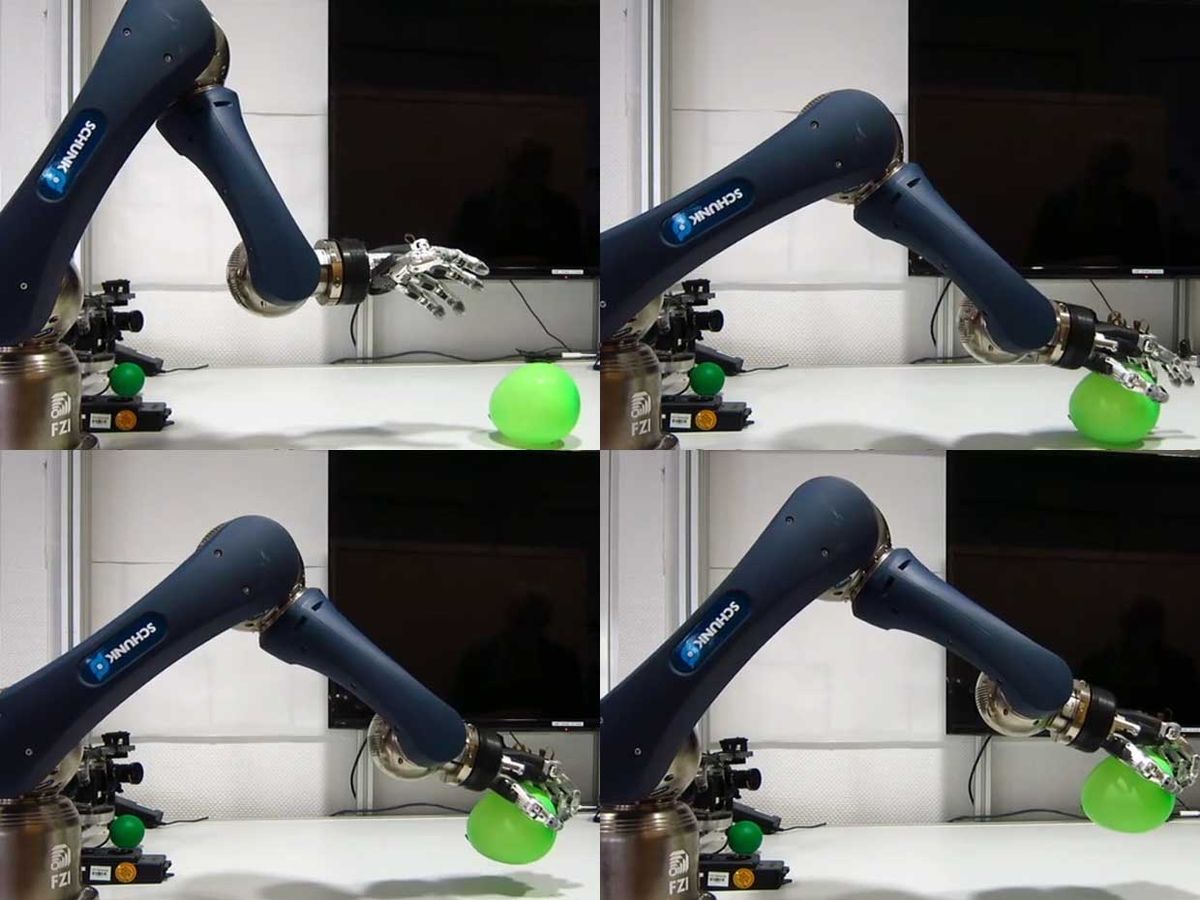Reaching for a nearby object seems like a mindless task, but the action requires a sophisticated neural network that took humans millions of years to evolve. Now, robots are acquiring that same ability using artificial neural networks. In a recent study, a robotic hand “learns” to pick up objects of different shapes and hardness using three different grasping motions.
The key to this development is something called a spiking neuron. Like real neurons in the brain, artificial neurons in a spiking neural network (SNN) fire together to encode and process temporal information. Researchers study SNNs because this approach may yield insights into how biological neural networks function, including our own.
“The programming of humanoid or bio-inspired robots is complex,” says Juan Camilo Vasquez Tieck, a research scientist at FZI Forschungszentrum Informatik in Karlsruhe, Germany. “And classical robotics programming methods are not always suitable to take advantage of their capabilities.”
Conventional robotic systems must perform extensive calculations, Tieck says, to track trajectories and grasp objects. But a robotic system like Tieck’s, which relies on a SNN, first trains its neural net to better model system and object motions. After which it grasps items more autonomously—by adapting to the motion in real-time.
The new robotic system by Tieck and his colleagues uses an existing robotic hand, called a Schunk SVH 5-finger hand, which has the same number of fingers and joints as a human hand.
The researchers incorporated a SNN into their system, which is divided into several sub-networks. One sub-network controls each finger individually, either flexing or extending the finger. Another concerns each type of grasping movement, for example whether the robotic hand will need to do a pinching, spherical or cylindrical movement.
For each finger, a neural circuit detects contact with an object using the currents of the motors and the velocity of the joints. When contact with an object is detected, a controller is activated to regulate how much force the finger exerts.
“This way, the movements of generic grasping motions are adapted to objects with different shapes, stiffness and sizes,” says Tieck. The system can also adapt its grasping motion quickly if the object moves or deforms.
The robotic grasping system is described in a study published October 24 in IEEE Robotics and Automation Letters. The researchers’ robotic hand used its three different grasping motions on objects without knowing their properties. Target objects included a plastic bottle, a soft ball, a tennis ball, a sponge, a rubber duck, different balloons, a pen, and a tissue pack. The researchers found, for one, that pinching motions required more precision than cylindrical or spherical grasping motions.
“For this approach, the next step is to incorporate visual information from event-based cameras and integrate arm motion with SNNs,” says Tieck. “Additionally, we would like to extend the hand with haptic sensors.”
The long-term goal, he says, is to develop “a system that can perform grasping similar to humans, without intensive planning for contact points or intense stability analysis, and [that is] able to adapt to different objects using visual and haptic feedback.”
Michelle Hampson is a freelance writer based in Halifax. She frequently contributes to Spectrum's Journal Watch coverage, which highlights newsworthy studies published in IEEE journals.



